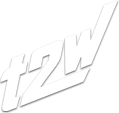Here's your answer!
Let me google that for you
NPV is very busy and so are the rest of us
🙂
OK - I have done it for you - and anyone else who would like reminding!
Here goes...
USD, DJI and FX
1. When the dollar rises strongly, companies which
export a lot of goods or with
large overseas operations
will suffer as overseas sales translate into lower US dollar profits.
Many of the largest US companies fall into this category including PG, KO, CAT, DE, GE, BA, MSFT, INTC.
This drives prices of stocks in lower.
2. Carry-trade positions unwinding, money flowing to heaven-safe currency: USD.
3. Weak USD US stock market has been artificially inflated for the past couple of years by a weak dollar. Since US stocks are denominated in the USD, they're generally cheaper on the international market, and mutual funds, investment companies, etc. in Europe and Asia see them as a good deal, so they buy them up.
When the EUR was introduced, it was worth about 60% as it is now against the USD, and the Dow was around 7,000... now it's around 14,000. If we assume that the Dow is an accurate measurement of the stock market in dollars*, then essentially it didn't go very far in almost a decade.
5. When the dollar goes stronger, foreign investors see this as a good opportunity to take a profit by selling all their holdings, which causes the stock market to fall. If and when the USD does make a long-term comeback against other currencies, the US stock market is going to crash, and crash hard.
I would agree that a consistently stronger dollar might cause a correction in the markets, but they will not tumble overnight because of it, just as the dollar will not gain strength instantenously. Furthermore (and this is not to throw in any conspiracy theories), one implicit objective of the Fed is to protect large U.S. equity holders from losing their money, so in its usual manner, when this correction does happen, it will adjust the interest rates to stop the bottom from falling out of the stock market. Which will, in turn, lead to a weakening of the dollar against other currencies, completing the cycle.
6. When stocks start to go down, foreign investors and speculators buy-back the dollar for the dollar-denominated assets; the dollar's safe-haven appeal comes into play.
Also, Treasuries- a refuge when the market is "risk-on".
Gold usually moves goes against the dollar's direction.
When market tumbles, it's risk-on time and carry-trades are reveresed. This is known as "unwinding") becomes due and people buy what they had once sold to buy the stocks.
That is, when market is healthy, I fund my positons by borrowing Yen (with 0.5 percent interest rate) to buy USD, which buys US stocks. When risk materialises up, it all goes the other way around.
